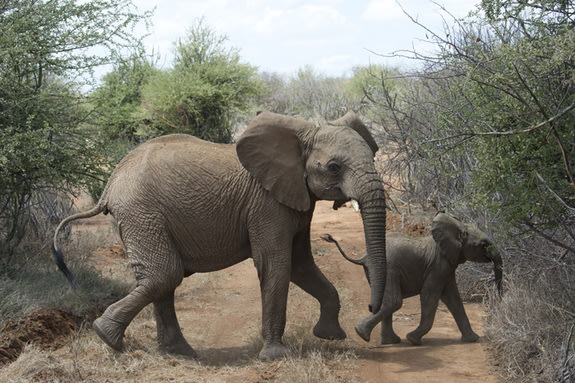When it comes to wildlife preservation, the first thing people often think of are sad television commercials featuring a ballad from a folk singer that is uncannily good at choking viewers up.
But for anti-poaching activist and forestry expert Rory Young,
his passion for saving the African elephant from deadly poachers
involves a detailed field manual and arming local teams with firearms to
combat what he calls, “well-armed, ruthless and experienced gangs of
poachers.”
Young says it's possible that if the poachers aren't contained, they
could effectively wipe out the African elephant population by 2020.
“A large percentage of rangers
across Africa have rudimentary training at best,” Young said in an
interview with Yahoo News. “The majority of countries do not have a
comprehensive anti-poaching doctrine, standard operating procedures, or
training systems.”
But at the same time, Young said more and more individuals are being forced into duty to combat the recent rise in poaching.
Young is part of an organization called Chengeta Wildlife
that is raising money to train these wildlife protection teams.
Although many African countries have worked to create sanctuaries for
their elephant populations, illegal poaching has surged in recent years.
And at the same time, most of these nations do not have the resources
to combat the poachers, who are often trained and heavily armed former
soldiers being paid large sums of money to slaughter the elephants for
their ivory tusks.
To counter the shortage of
resources, Young and Chengeta have published a field manual that
explains the poaching problem and offers a step-by-step solution to
combating it.
“We have developed a structured
and comprehensive ‘doctrine’ and have recently written ‘A field Manual
for Anti-Poaching Activities,’" Young said. “This small book is the
first of its kind and outlines the doctrine and shows how the poaching
processes work and explains the strategies, processes, skills and
techniques necessary combat poaching and deter it.”
Less than 100 years ago, there were an estimated 3 to 5 million
African elephants. After massive poaching and land development
threatened extinction, there is now ample evidence showing that in areas
where the elephants are protected, the numbers are recovering.But in China, there is still a huge demand for the ivory taken from elephant tusks, even though the trade was banned back in 1989. Worse yet, the vast majority of ivory taken from the dead elephants is used for essentially worthless trinkets and other small items like chopsticks.
A team of American designers recently created an original graphic to help Young’s organization raise money. “The True Cost of Ivory Trinkets” was created by Robin Richards, Joe Chernov, and Leslie Bradshaw to highlight the cruel ways poachers kill the elephants, including poisoning their water supply and hacking off the tusks while the elephants are still alive, leaving them to slowly bleed to death.

An infographic created to show the true costs of illegal elephant poaching
Bradshaw said the team was moved to assist Young after a graphic about shark killings
that they created in 2013 quickly shot to the top of Reddit and other
social media sites. A study released this week showed that the demand for shark fins in China had dropped by more than 50 percent since an awareness campaign was launched there.
“There is way too much complaining and hurling of insults at China,” Young said.
“Most of the people there do not
really understand the brutality and the devastation caused for the ivory
to end up as a letter opener or chopstick. I believe that the Asian
youth if shown exactly what is happening would not accept it.”
Young said that by the end of
2014 he will have trained more than 150 team members on anti-poaching
procedures. But he says there is an estimated need for 50,000
individuals at all levels, from top-level bureaucracy to armed men in
the jungle to fully contain the illegal poaching trade.
“Both the African elephant and
the more endangered Forest elephant can both be saved and their numbers
increased again, but only if we move immediately and decisively,” he
said.


No comments:
Post a Comment